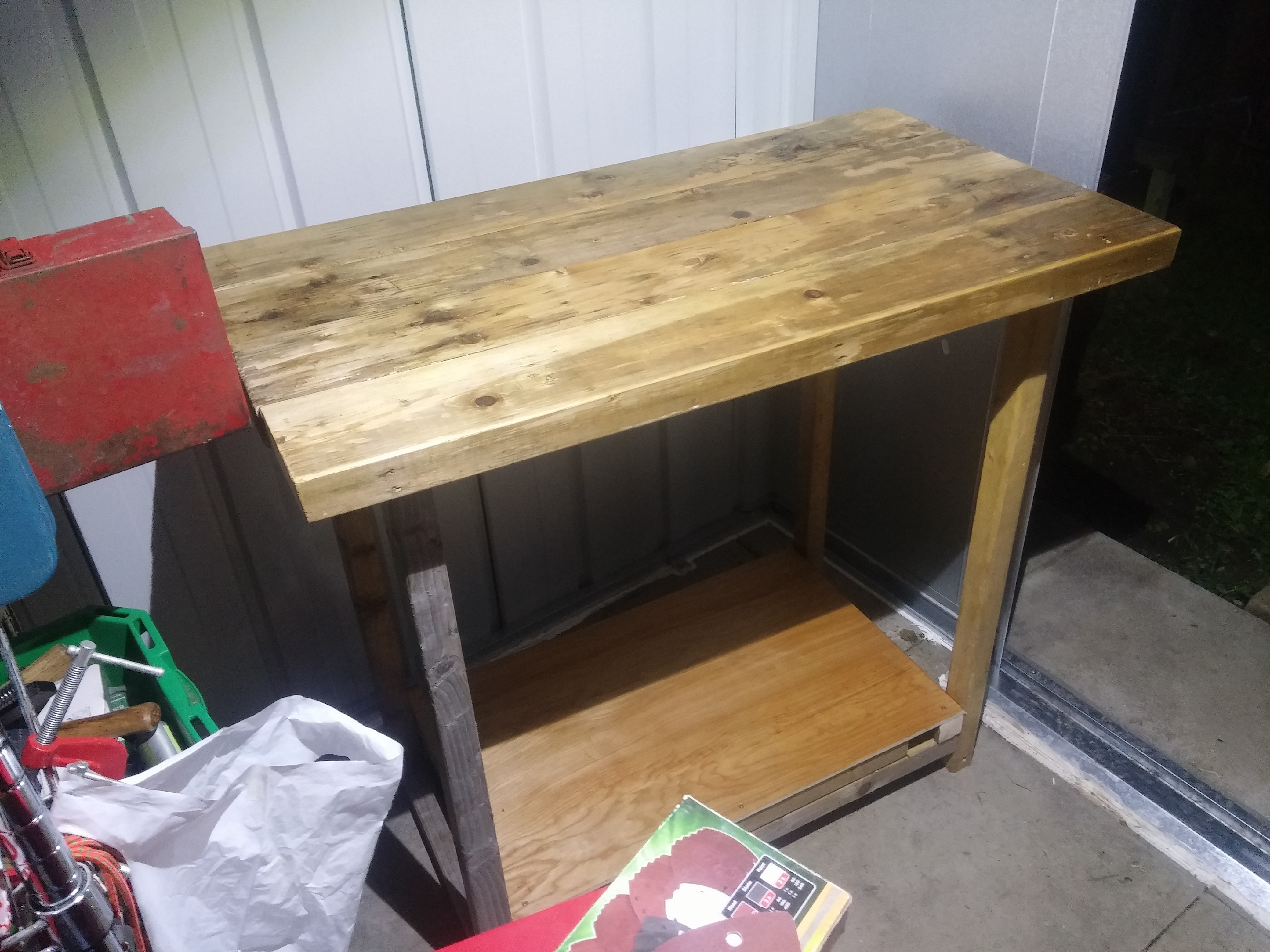I'm new to woodworking and recently built a simple workbench.
The tabletop is made of 3x6 lengths glued & screwed together, and I made a frame from 2x2 with a shelf at the bottom. The legs are fairly tall at 90cm. Everything is fixed using screws, atleast 2 for each join, and steel brackets also.
When I assembled everything I noticed that there is a fair bit of movement if you grab the tabletop on either end and twist it, I'm looking for ways to minimise this movement and also find out what I could do better next time.
My suspicion is that I've used wood that's too small / weak for the frame, but it seems very sturdy otherwise. What could I do to salvage this frame?
Note - since these pics were taken, I've also added 2" steel corner brackets to the insides of the corners at the top. This didn't seem to help with the movement much. Also, that janky support at the bottom front for the shelf has been redone, looked awful.



